Discount super market’s super cheap bento wows us with its looks, confuses us with its taste

A tremendous value for money…that is, if you don’t mind eating it.
Mega discount supermarket Lamu, originally an Okayama business, has become a part of everyday life for many people in the Chugoku, Shikoku, Kinki, and Kyushu regions of Japan (basically most of the western/southwestern half of the country) . With its gaudy, bright pink facade and hot pink logo, the store has become an icon for people in the southwestern part of Japan thanks to their insanely cheap prices.
What makes those prices almost unbeatable is the how Lamu keeps its costs low in lots of little ways. For example, they don’t use shelves, and simply stack products in their cardboard shipping boxes. It sort of feels like shopping at a wholesale store.

They also don’t wrap their bentos in unnecessary extra packaging.
▼ No plastic wrap or rubber bands.
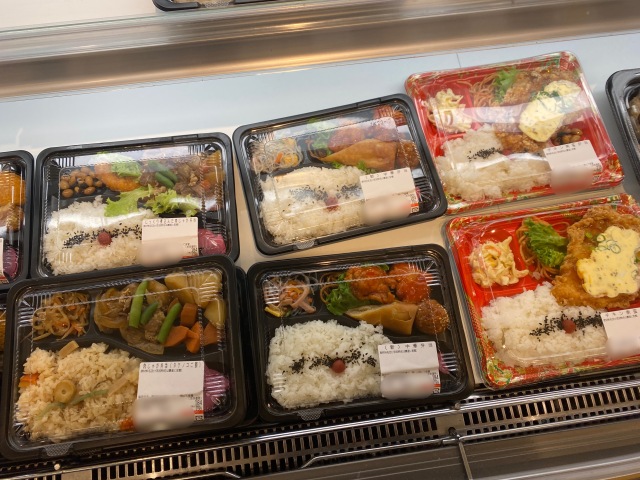
Our Japanese-language reporter Ikuna Kamezawa, a Tokyo resident but a regular traveler, happened to be near a Lamu on a recent trip and decided to stop by. While she was browsing in the produce section, she came upon a bento boxed lunch that caught her eye. Called the “Manpuku Nori Bento”, or the “Satisfying and Lucky Seaweed Bento”, it sold for the marvelous price of just 198 yen (US$1.73).
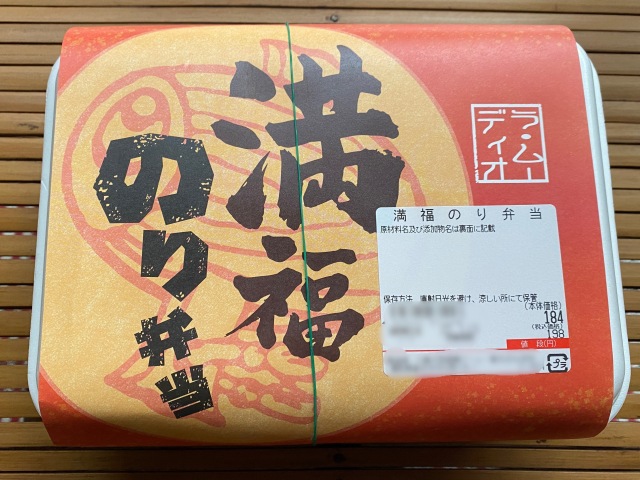
Unlike most bento, however, which come in plastic containers with a clear lid, this one was inside a white styrofoam container wrapped with special paper, so Ikuna couldn’t see what was inside.
▼ For reference, they also had regular bento packages with a clear plastic lid. Only the Manpuku Nori Bento was different.
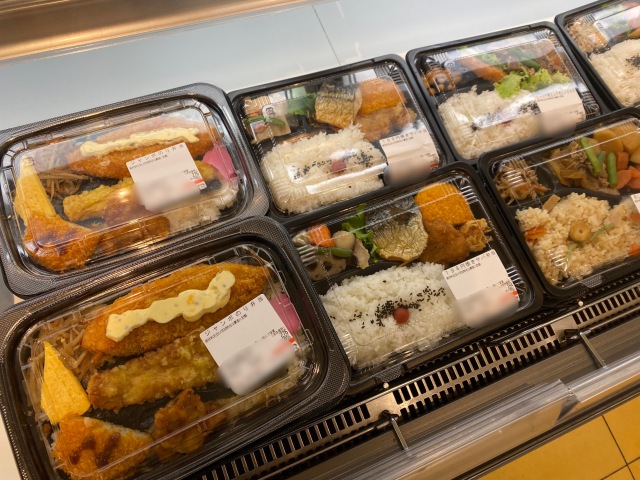
It was all very mysterious, and Ikuna couldn’t repress her curiosity. She had to buy it and see what it contained.
Now, Lamu might have a policy of reducing costs where it can, but that doesn’t mean it cuts on customer service. Naturally, they have microwaves onsite so that customers can warm up their bento after they buy them. So Ikuna gratefully popped hers in for a good few minutes, and it came out nice and piping hot. After that, she couldn’t wait to see what was inside.
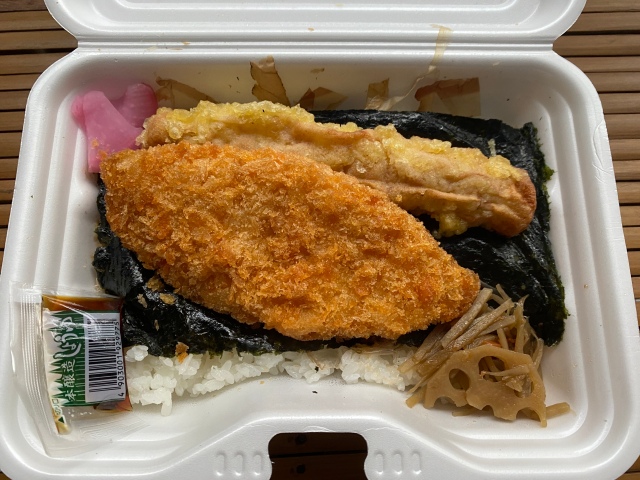
Ooh! It was a pretty standard-looking seaweed bento! Seaweed bento, or “noriben” in Japanese, are generally defined as rice covered in a strip of dried seaweed served together with seafood accompaniments, which are usually fried. This noriben checked all the boxes of what you would expect, at least at first glance.
Weighing in at 353 grams (12.4 ounces), it was about the size of an average noriben, but with its crazy low price of 198 yen, Ikuna got a lot of bang for her buck. Plus, the quality was pretty good. The fried white fish, which is a common feature in noriben, was really crispy and delicious.
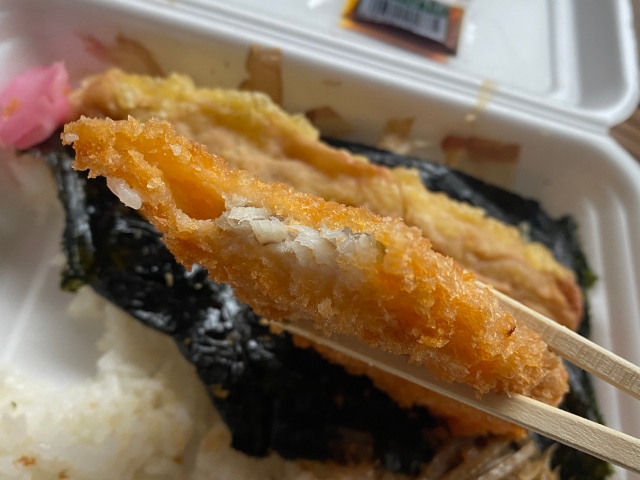
The chikuwa tempura, a deep-fried fish paste stick that’s another common noriben component, was huge and took up the whole length of the container. It was way more substantial than your average chikuwa tempura.
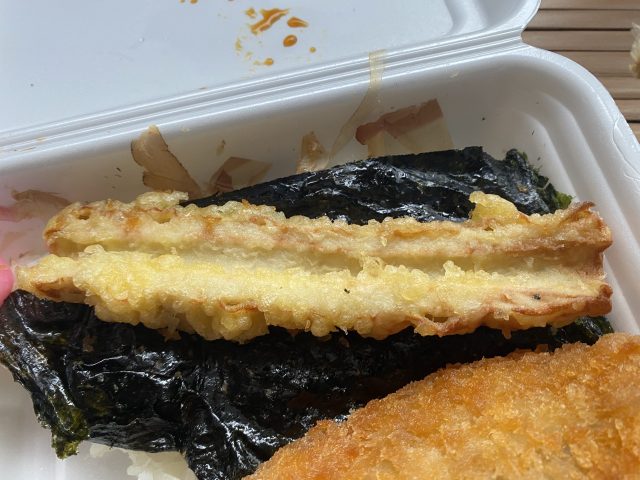
But after all those greasy fried foods, Ikuna wanted a nice palate cleanser, and therein lies the true pleasure of eating noriben, since it comes with a nice palate cleanser right in the box: fluffy white rice, dusted with furikake rice seasoning and topped with seaweed, which is also often seasoned. Ikuna dug in and took a bite of the rice.
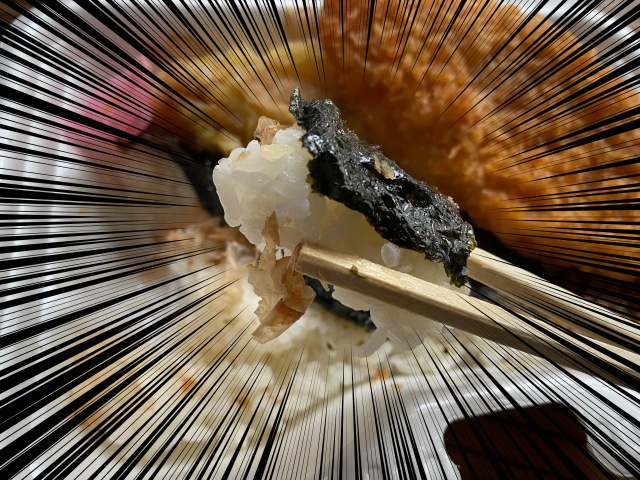
“What?! It’s so plain!!”
Ikuna lifted up the layer of seaweed to take a peek at the rice, but there was no seasoning on it, just a very small amount of limp-looking katsuobushi, or bonito flakes.
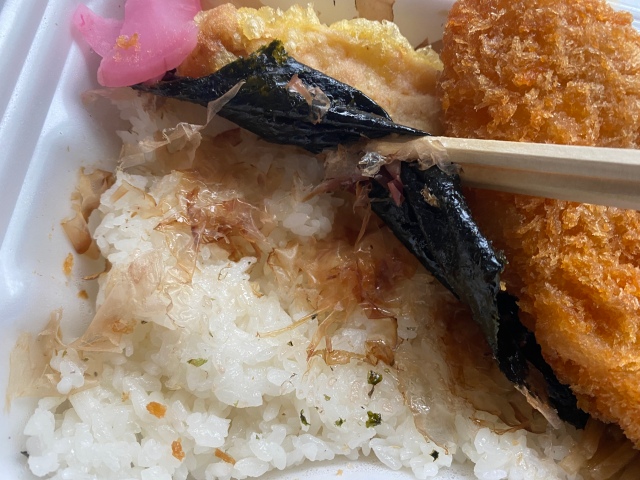
The seaweed itself wasn’t seasoned or boiled in soy sauce either. It was just a plain, unseasoned sheet of seaweed atop plain old shreds of katsuobushi.
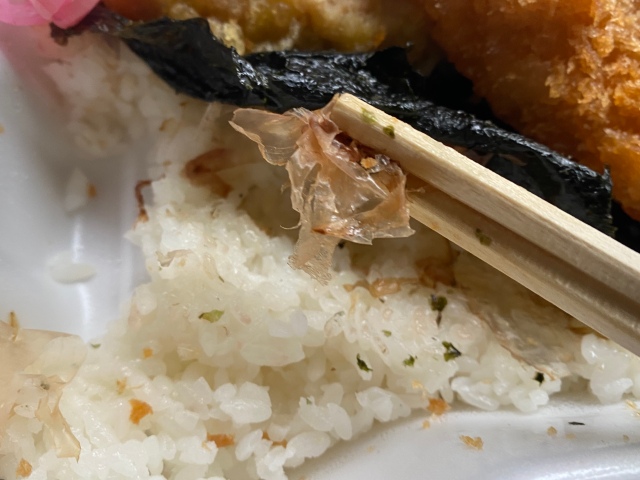
Naturally, Ikuna understands that noriben are different everywhere you go, so she hadn’t really expected the rice to be seasoned with okaka furikake, which is made from seasoned bonito flakes, seaweed, and sesame seeds and which is what she was most used to seeing on the rice in noriben. But the result was just too bland for her tastes.
But wait! The bento came with a package of soy sauce. Was it the special kind of soy sauce, designed for dressing rice? Ikuna gave it a try.
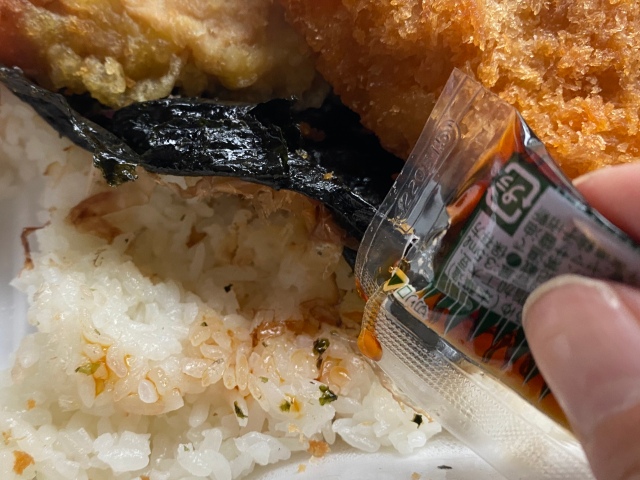
Nope…It was just regular soy sauce. Ikuna was disappointed. She ended up sprinkling some of her own furikake over the rice and eating it that way.
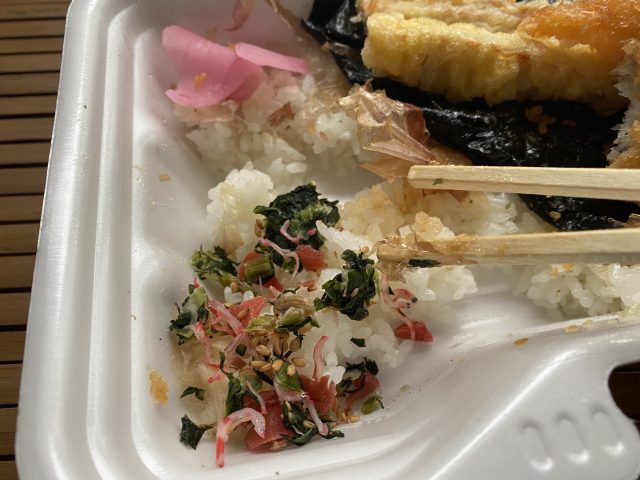
The bento did not fully meet Ikuna’s expectations, but that’s not to say that she wouldn’t recommend Lamu’s Manpuku Nori Bento or claim it isn’t worth it. The price alone is well worth the large portion you get, so if you’re looking for a bargain lunch, you can’t really go wrong with this one.
Ikuna does have a second bento she recommends from Lamu, though: the Okayama Meibutsu Torimeshi, or “Okayama’s Famous Chicken and Rice” bento.
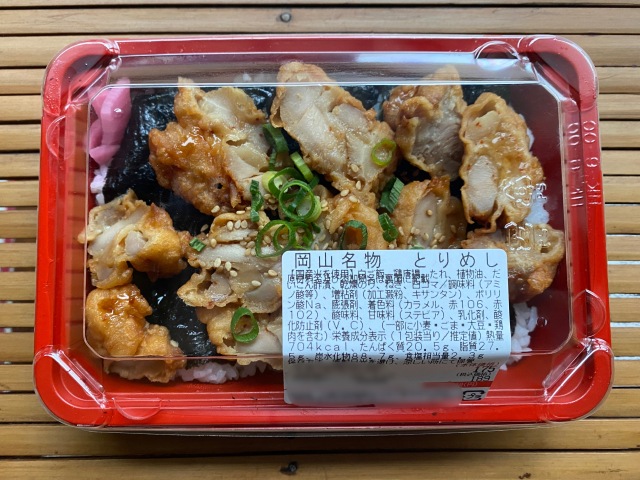
Since torimeshi is a specialty of Okayama, it’s not as common as far as bento go, but it was really delicious. Plus, Lamu’s recipe for torimeshi is loyal to the true flavor of the Okayama dish, as expected of an Okayama-based store.
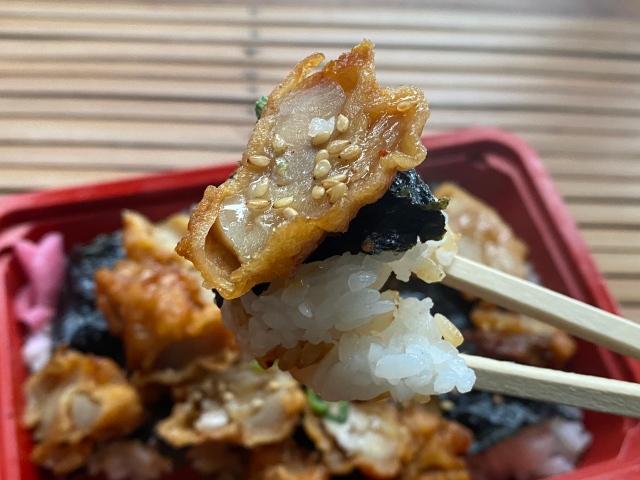
That’s why Ikuna says that if Lamu’s noriben doesn’t suit your tastes, you should try their torimeshi. It’s a similar bargain price at just 189 yen, it tastes great, and it’s a specialty of Okayama Prefecture!
Curious about other Okayama specialties? Check out our one-minute recipe for Cruedo Spaghetti Style Noodles, which is also a bargain meal!
Images © SoraNews24
● Want to hear about SoraNews24’s latest articles as soon as they’re published? Follow us on Facebook and Twitter!
Credit:

0 comments: